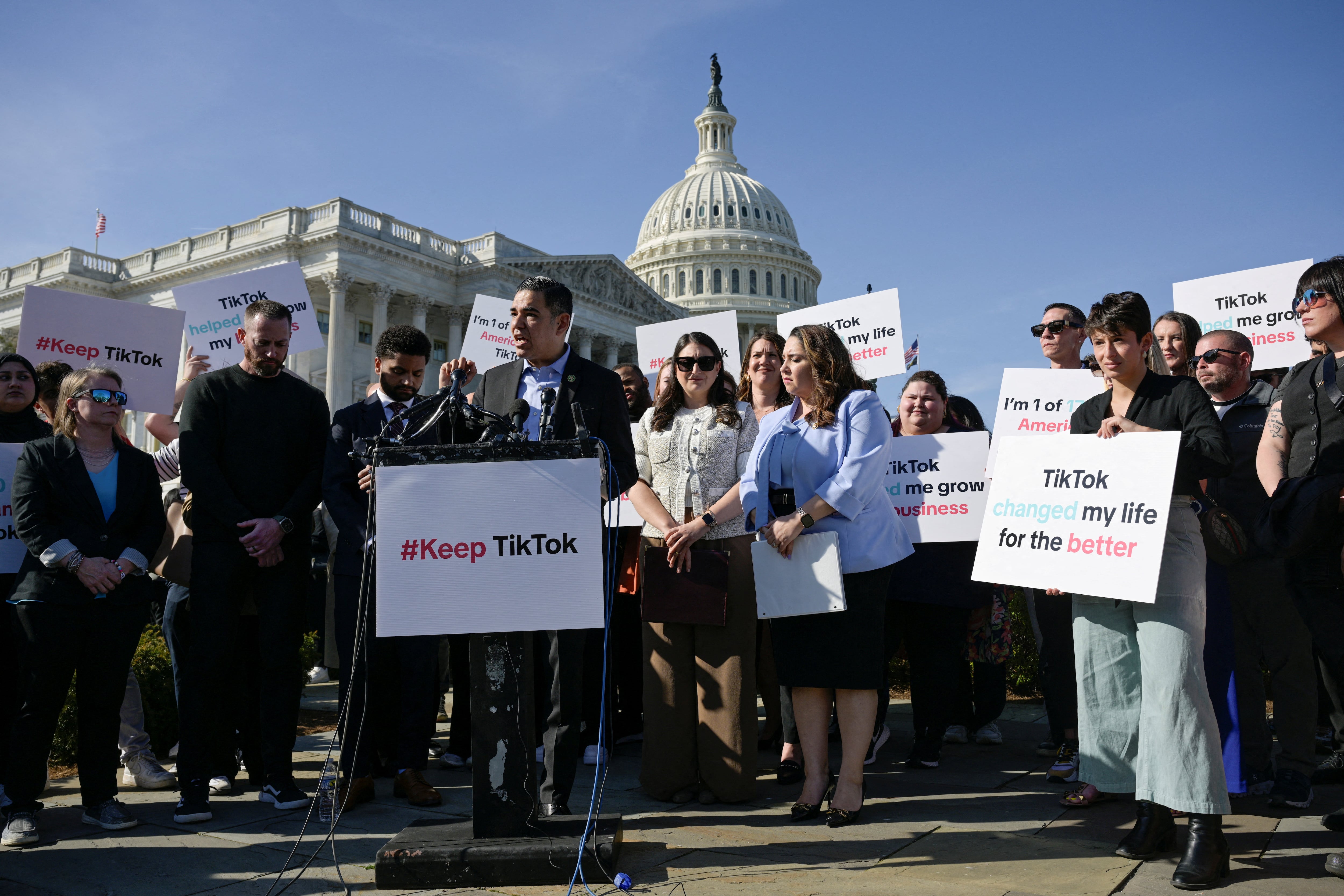By HOWARD FENDRICH AP Tennis Writer
NEW YORK — After serving poorly for one set during a U.S. Open victory, Coco Gauff headed to a practice court for some extra work on that stroke Wednesday night.
She realized her tosses were too far in front of her and too low, so even if she beat 99th-ranked Tatjana Maria, 6-4, 6-0, to reach the third round, Gauff wanted to fix the issue.
“I didn’t serve great at all,” Gauff said after stretching her winning streak to nine matches at the site of her first Grand Slam title a year ago. “I got lucky. I think I only got broken once, but probably could have – should have – gotten broken a couple of more times.”
Gauff, a 20-year-old from Florida, had all sorts of trouble at the outset under the lights at a hot and muggy Arthur Ashe Stadium against Maria, a 37-year-old from Germany who made it to the Wimbledon semifinals two years ago and was hitting slices on nearly every forehand and backhand.
“I love Tatjana … (but) she’s very annoying to play. Tonight was just an annoying match. The balls, you were able to hit winners on them, but because she’s slicing it, you have to generate all the power,” Gauff said. “Sometimes it can be more physically tiring than it looks, because you have to generate literally 100% of the power every single time, compared to maybe somebody where you can just redirect.”
Defending men’s champion Novak Djokovic reached the third round on Wednesday night when his opponent had to stop in the third set of their match with an injury.
Djokovic led Laslo Djere, 6-4, 6-4, 2-0, when his Serbian countryman retired. Djere was leading 4-2 in the second set when he appeared to be troubled by pain near his hip and was visited by a trainer later in the set.
There were seven double-faults for Gauff in her initial set. She put in fewer than half of her first serves. She faced five break points, saving four. Problems arose in other aspects of her play, too, including winning the point on just nine of 17 trips to the net, and a total of twice as many unforced errors, 20, as winners, 10.
Her body language was frequently negative as can be after some of the mistakes. Gauff would look at her guest box and put her palms up as if to say, “What is going on?” She would roll her eyes or put a hand on a hip, including after one wild swinging volley that sailed several feet long.
When the third-seeded Gauff served for the opening set, she double-faulted twice and faced a pair of break points that would have allowed Maria to get the score to 5-all. But Maria missed a forehand on the first, and Gauff struck a cross-court forehand passing shot on the second, then finished off the game.
The second set was a completely different story.
Gauff put together 15 winners to merely five unforced errors – two of which were double-faults – and went 10 for 11 at the net.
“She’s a mentally really strong player. She has a lot of power. I knew that I had my chances today, because I know that my game style is not one she prefers. I had my chances in the first set that I didn’t take,” said Maria, whose two daughters, ages 10 and 3, sat in the stands. “This kind of player … if you don’t take your chances, then it goes away. This is what happened today.”
On Friday, Gauff will take on 27th-seeded Elina Svitolina, a three-time major semifinalist who was a 6-1, 6-2 winner against Anhelina Kalinina, for a berth in the fourth round.
Gauff arrived in New York off a series of early exits elsewhere. That included two consecutive losses at hard-court tuneup events this month, which followed eliminations in the fourth round at Wimbledon and the third round of the Paris Olympics, both in July.
“It’s been a tough few weeks,” Gauff said.
Perhaps. But the coming days could be a lot better if she plays more like she did in the second set Wednesday than in the first.
KREJCIKOVA OUSTED; TIAFOE GETS SHELTON REMATCH
Frances Tiafoe is getting the rematch he wants, a second shot at Ben Shelton at the U.S. Open.
But there won’t be a second straight Grand Slam title for Barbora Krejcikova.
The Wimbledon champion was knocked out in the second round on Wednesday, defeated by Elena-Gabriela Ruse, 6-4, 7-5.
The eighth-seeded Krejcikova won her second Grand Slam singles title this summer, but then she didn’t play any matches after the Paris Olympics. She acknowledged last week not knowing where her level of play was.
Turns out, it wasn’t good enough.
“I mean, winning Wimbledon is amazing. It’s a great, great, great result, I’m very proud about it and how I was able to handle everything there,” said Krejcikova, who hadn’t played a tournament on hard courts since February.
“I think I was playing quite well, definitely better than in the first match. I think my game was improving, but it just wasn’t enough.”
No woman has won Wimbledon and the U.S. Open in the same year since Serena Williams in 2012.
Tiafoe had short work on the steamiest day of the tournament thus far, with temperatures in New York surpassing 90 degrees. The No. 20 seed won the first two sets before his opponent, Alexander Shevchenko, retired after the first game of the third set.
Three men’s matches ended when an opponent stopped playing, the last one giving Djokovic his 90th career win at the U.S. Open for Djokovic, allowing him to reach that total at all four Grand Slams. The 24-time major champion will play No. 28 seed Alexei Popyrin on Friday.
Shelton, the No. 13 seed, later beat Roberto Bautista Agut, 6-3, 6-4, 6-4. He ousted Tiafoe last year in the quarterfinals, stopping Tiafoe from what would have been a second straight trip to the U.S. Open semifinals.
“Obviously he’s very much like me in how excited and energetic he is on the court,” Tiafoe said, “and has such a big game and big shots and serves big and gets the crowd going.”
Well, maybe not quite as well as Tiafoe does.
“I know that the people love him here. Probably more than me. He’s electric here, and his crowds are electric here,” the 21-year-old Shelton said.
“It will be a battle. It will be a war just like the last two times we’ve played. Yeah, I’m more than excited to be out there with him again.”
They were two of the four American men to reach the third round in the bottom half of the draw. No. 12 Taylor Fritz got there by beating Matteo Berrettini, 6-3, 7-6 (1), 6-1, while Brandon Nakashima beat Arthur Cazaux and will next play No. 18 Lozenzo Musetti, the bronze medalist at the Olympics.
Ruse, a 26-year-old from Romania, advanced to the third round of a Grand Slam for the first time and will play No. 26 seed Paula Badosa, who eliminated American Taylor Townsend, 6-3, 7-5.
Badosa continued her resurgence in a strong summer by reaching the third round of the U.S. Open for the first time.
“I know it’s just a third round, but I was really looking forward to doing this in New York,” said Badosa, a Spaniard who was born in New York.
Jiri Lehecka ignored the heat to engineer the biggest comeback of his career, rallying to beat Mitchell Krueger, 6-7 (5), 0-6, 6-4, 6-4, 7-5, in a match that finished a minute shy of four hours. Lehecka, the No. 32 seed, not only came from two sets down for the first time in his career, but he was even down 3-0 in the third set against the American qualifier.
“I kind of dug back into the match with a big fight, and then the fourth set and fifth set was just a battle and we were both fighting for every point,” Lehecka said.
He will face No. 6 seed Andrey Rublev, who also came from two sets down to outlast Arthur Rinderknech, 4-6, 5-7, 6-1, 6-2, 6-2.
Past U.S. Open finalists Aryna Sabalenka and Alexander Zverev both won their matches in straight sets, while Olympic gold medalist Zheng Qinwen, the No. 7 seed, rallied passed Erika Andreeva in three sets.
Another women’s third-round match will see No. 14 seed Madison Keys against No. 33 Elise Mertens. Keys rolled past Maya Joint, 6-4, 6-0, while Mertens knocked out Ajla Tomljanovic, 6-3, 6-2.
No. 29 seed Ekaterina Alexandrova defeated Iva Jovic, a 16-year-old from Torrance, 4-6, 6-4, 7-5. Jovic became the youngest American to win a women’s main draw match at the U.S. Open since 2000 when she eliminated 2023 Australian Open semifinalist Magda Linette of Poland, 6-4, 6-3, on Monday.
CYBERBULLYING REMAINS A PROBLEM
Caroline Garcia, a U.S. Open semifinalist two years ago, drew attention Wednesday to the ever-present problem of cyberbullying in tennis, particularly by people who bet on matches, after her first-round loss at the Grand Slam tournament.
“Maybe you can think that it doesn’t hurt us. But it does. We are humans,” Garcia wrote on social media. “And sometimes, when we receive (these) messages, we are already emotionally destroyed after a tough loss. And they can be damaging. Many before me have raised the subject. And still, no progress has been made.”
Garcia, a 30-year-old from France who has been ranked as high as No. 4, was seeded 28th at Flushing Meadows but was eliminated by Renata Zarazúa, 6-1, 6-4, on Tuesday. Zarazúa is ranked 92nd and is making her U.S. Open debut.
Garcia offered examples of “just a few” of the hundreds of messages she said she was sent after losing recent matches, including one telling her she should consider suicide and another that read, “I hope your mom dies soon.”
“And now, being 30 years old, although they still hurt, because at the end of the day, I’m just a normal girl working really hard and trying my best, I have tools and have done work to protect myself from this hate. But still, this is not OK,” Garcia wrote. “It really worries me when I think about younger players coming up, that have to go through this. People that still haven’t yet developed fully as a human and that really might be affected by this hate.”
As other players have mentioned in the past, she talked about the issue of being attacked verbally by gamblers upset about losing money.
“Tournaments and the sport keeps partnering with betting companies, which keep attracting new people to unhealthy betting,” Garcia said. “The days of cigarette brands sponsoring sports are long gone. Yet, here we are promoting betting companies, which actively destroy the life of some people.”
This sort of harassment via social media is nothing new, of course, and it’s not new to tennis.
As Tiafoe said: “People are saying outlandish … stuff. It’s just wild.”
“I try not to look at the comments,” 2019 U.S. Open champion Bianca Andreescu said, mentioning that she will ask her PR person to scroll through and let her know when there are positive ones. “Because there’s always going to be a negative comment and I’ve learned that the hard way.”
Players have called it out in the past, and Grand Slam tournaments have been trying to help prevent messages from reaching the athletes.
The French Open partnered in 2022 with a company that uses artificial intelligence to filter players’ social media accounts, and the groups that run the U.S. Open, Wimbledon, the women’s tour and the lower-level ITF Tour announced in December they were starting a service to monitor for “abusive and threatening content” on X, Instagram, YouTube, Facebook and TikTok.
Related Articles
U.S. Open: Naomi Osaka gets her first top-10 win in more than 4 years
U.S. Open: Coco Gauff, Novak Djokovic begin title defenses with easy wins
U.S. Open: Naomi Osaka back at the site of two of her Grand Slam titles
U.S. Open: Coco Gauff begins title defense amid a slump
U.S. Open: Novak Djokovic, Carlos Alcaraz on opposite sides of the draw
“Many before me have raised the subject,” Garcia said. “And still, no progress has been made. Social media platforms don’t prevent it, despite AI being in a very advanced position.”
She closed her message by addressing anyone reading it, suggesting that “next time you see a post from an athlete, singer or any other person, that has failed or lost, you will remember that she or he is also a human being, trying his best in life. Be kind. Give love. Enjoy life.”
TOURNAMENT, ESPN EXTEND DEAL
The U.S. Open will remain on ESPN through 2037 under a 12-year contract that starts in 2026, the network and the U.S. Tennis Association announced Wednesday.
The new agreement expands ESPN’s streaming rights and will include coverage on ABC of the tournament’s two Sundays.
ESPN began showing some U.S. Open matches in 2009, splitting the event with longtime broadcaster CBS, before taking over entirely in 2015 under an 11-year deal.
AP sports writer Brian Mahoney contributed to this story.





























